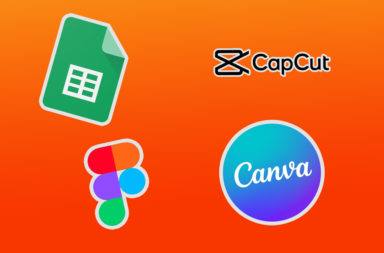- Mark Zuckerberg‘s Meta has partnered with Microsoft Azure to introduce its generative AI tool Llama 2, considered to be a rival to ChatGPT.
- Llama 2 comes as the next generation of their open source large language model (LLM) for free research and commercial use.
- The Internet seems to have mixed emotions regarding the new AI tool. Some find it revolutionary and powerful while some fear it could be used to spread misinformation.
With the most amazing breakthroughs in generative AI, there is immense potential to help create a new era of economic and social opportunities and give individuals, creators, and businesses new ways to express themselves and connect with people. From chatbot creation to code generation to content creation, Llama 2 is proving to be a versatile tool that is revolutionising the way we process language.
The Advantage Of Open Models
Unlike closed language models like OpenAI’s GPT-4 which powers ChatGPT, and Google’s PaLM 2 which powers Bard, Llama 2 is an open-source model. According to Meta, making AI models available openly benefits businesses, startups, entrepreneurs, and researchers access tools developed at a scale and backed by computing power that would be challenging for them to build themselves.
It will open up a world of opportunities for them to experiment, innovate, and ultimately benefit economically and socially. Opening access to today’s AI models enables a generation of developers and researchers to stress test them, identify and solve problems faster, as a community. By seeing how these tools are used by others, the parent teams can learn from them, improve those tools, and fix vulnerabilities.
The Structure
Now that the developers have access to Llama 2’s code and data, it will enable them to build and improve on the model. The AI tool was launched with a very permissive community license along with the code, pre-trained models, and fine-tuned models. You can find the 12 open-access models (3 base models & 3 fine-tuned ones with the original Meta checkpoints, plus their corresponding transformers models) on the Hub. The pre-trained model sizes include 7 billion, 13 billion, and 70 billion parameters, which can all be accessed.
Also Read: Awez Darbar Builds A House for Love, Magic, And Content Creation!
Llama 2’s Partnerships
Llama 2 has been seamlessly integrated into Hugging Face. It is also freely accessible through Amazon Web Services, and Microsoft Azure. Although, Microsoft Azure is Llama 2’s ‘preferred partner.’ Azure customers can use the tool as an option for building applications. Downloading Llama 2 from Azure’s AI platform will also get you the fine-tuning, safety, and inference features that are specially designed for working with LLMs.
This partnership aligns with both the tech giants’ public stance of democratising AI. Azure is a paid subscription, but Microsoft’s AI-powered Bing and Edge tools are free to use and powered by OpenAI’s GPT-4, which has received heavy investment from Microsoft. This just shows how hard Microsoft is going on generative AI and leveraging powerful partnerships to make it happen. For Meta, the Microsoft partnership is a valuable channel for Azure developers to use Llama 2.
Llama 2 vs. ChatGPT
The comparisons between Meta’s Llama 2 and OpenAI‘s ChatGPT have been going around the internet ever since the news of the launch broke out. In Meta’s research paper, it compared Llama 2’s performance to other models, including OpenAI’s GPT-3.5 and GPT-4 and Google’s PaLM and PaLM 2 on various academic benchmarks.

Llama 2 didn’t score as high on datasets that measure general knowledge, grade school math, or coding abilities but won at human evaluations where humans scored 4,000 prompts on “helpfulness” comparing various models. And when it came to benchmark comparisons with other open-source models (like MPT and Falcon), Llama 2 had them beat. Overall its intelligence is rated as similar to GPT-3.5, but it’s rated slightly more helpful than ChatGPT in chatbot form.
The Internet Reacts To Llama 2
It is still too early to say how the Llama 2 will perform in the market. However, the mixed reactions on the internet suggest that it may not be a runaway success. Only time will tell whether the Llama 2 can overcome the skepticism and criticism to become a popular AI platform. While most tech aficionados welcome the new AI tool and the benefits it brings, some are debating over the open-source feature. Is Llama 2 as open-source as it claims to be? Or is Meta confusing ‘open source’ with ‘resources available to some users under some conditions’?
There are also concerns about Llama 2’s privacy features. People are worried about Meta collecting personal data and tracking usage data of the users to utilise it for advertising purposes. Mark Zuckerberg also acknowledged the concerns that have been raised about the model’s safety and reliability, and pledged to take steps to address them.
Here is Why I think small businesses will benefit the most from Meta’s LLAMA 2 being Open sourced
by u/Technicallysane02 in growthguide
How open is “open”
— H4RP4L (@H4RP4L) July 21, 2023
How decentralised is “decentralised” https://t.co/utlU3R2IWm
AI Arms Race Shifts Towards Interoperability: Meta’s LLaMA on Azure Marks a Milestone
by u/Multiplatform_com in Multiplatform_AI
Microsoft is really clever in AI strategy #Llama2 #llm #generativeai #meta #Microsoft https://t.co/kDyaiphYgH
— Mark Chen (@MarkChenNext) July 19, 2023
Meta’s Newest Indian Interest
Closer to home, Meta India is collaborating with Lowe Lintas’ digital creative unit: Lowe Lintas DX to offer strategic support so as to create thought leadership resources for developing campaigns. The partnership marks the first for MullenLowe Global internationally and will entail the agency and Meta experts to support brand-building programs, Reels, and creative best practices. With Meta in India, the team will also be able to work with Instagram and Facebook creators and Meta’s AR and VR partners. Lowe Lintas DX’s aim is to offer advanced strategic and creative services specifically designed for long-term brand building in the digital spheres along with Meta.
Let’s wait and watch how the Llama 2 performs in the market and how people’s opinions of it evolve over time.


